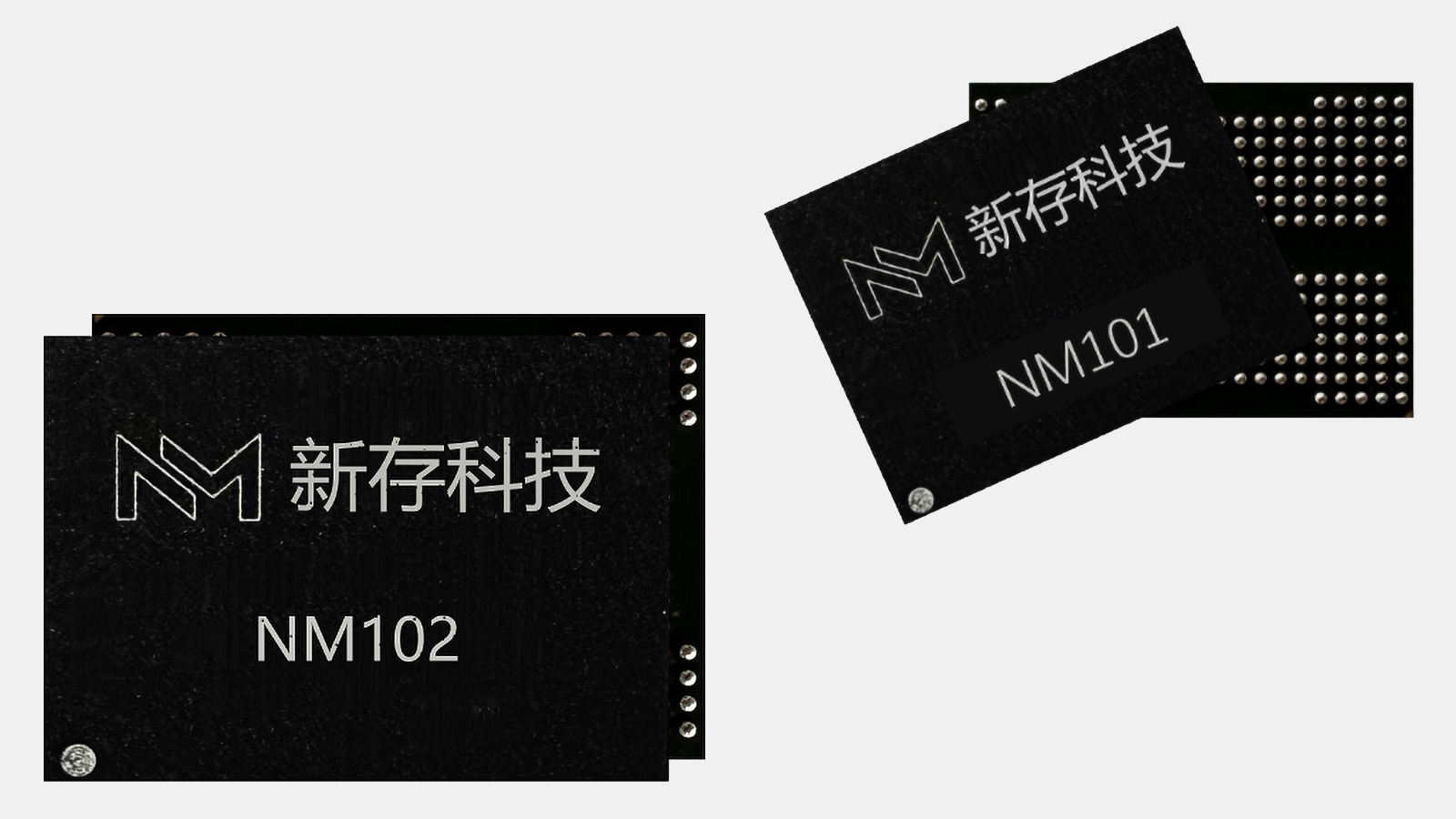Chinese chipmaker unveils Optane-like storage class memory

Officially, the development of mainstream storage class memory (SCM) like Intel Optane has been suspended at big companies like Intel and Micron, but it looks like China-based Numemory, also known as Xincun Technology, has quietly introduced a new Optane-like memory. The company's first SCM memory devices wed the performance of dynamic random access memory (DRAM) and the non-volatile capabilities of NAND flash memory. But it looks like at a high price.
Good performance, not enough capacity (yet?)
As for general performance, South China Morning Post claimed last fall, citing the company, that Numemory's NM101 chips can be used for SSDs that can load a 10GB high-definition video in just one second. This is in line with what modern performance-mainstream SSDs with a PCIe 5.0 x4 interface can do. However, there is no word about the new memory's data retention rates or possible endurance limitations regarding the number of writes.
Because Numemory's NM101 seems to use an industry-standard NAND interface with a standard 1.2 volts I/O (typical for internal voltages of low-power M.2 SSDs), it is possible to use these devices for SSDs, provided that there is a controller (and firmware) that supports this memory, it is possible to build SSDs that will be drop-in compatible with existing PCs.
However, 64Gb (8GB) and 128Gb (16GB) memory devices are not exactly economically viable for SSDs these days. One needs 128/64 ICs to build a 1TB SSD. This may not be a problem for an enterprise-grade U.2, ruler, or add-in card SSD that can accommodate loads of NAND packages. But M.2-2280 modules can only house up to four memory packages on one side and four on another side, so it is probably impossible to build 1TB M.2-2280 drives based on Numemory's NM101 and NM102. However, judging how rapidly Numemory has managed to double the capacity of its devices, the company can indeed become a contender for high-performance SSDs.
Also, if some clients in China would like to use SCM for some performance and relatively capacity-hungry applications that do not necessarily need an M.2-2280 form factor, they can certainly do so, unlike their peers elsewhere now that Intel's Optane (3D XPoint) is gone. Then again, Intel's 2nd Generation Optane memory also had two decks and offered 128 Gb per device, so building truly high-capacity storage devices using such memory was hard, too. Yet, Intel sold boatloads of Optane-branded products.
64Gb and 128Gb devices with a 3200 MT/s interface
Xincun Technology's 1st Generation Numemory device emerged back in September last year. The NM101 is a 64Gb (8 GB) single-level cell (SLC) 3D-stacked memory IC with an industry-standard 3200 MT/s NAND interface. The operating voltage of the memory array is 5.3/4.5 volts (which points to a mature process technology used to make the IC), whereas the I/O voltage is 1.2 volts, an industry standard.
Since 64Gb (8 GB) capacity is hardly enough for more or less high-capacity storage devices, the company quickly followed up with its 2nd Generation product earlier this year. The NM102 memory chip features a 128Gb (16 GB) capacity yet retains an SLC architecture and a 1.2V I/O voltage. Numemory does not disclose the operating voltages for its NM102, so we can only make guesses. 128Gb is the capacity of Intel's 2nd Generation Optane (3D XPoint) memory devices.
Get Tom's Hardware's best news and in-depth reviews, straight to your inbox.
Xincun does not disclose further specifications of its devices, only briefly mentioning 'ultra-fast microsecond-level response times,' which is a very vague description of latency, to put it mildly. To put the number into context, Intel's Optane promised 10 ~ 15 microseconds read latency and over 200-microsecond write latencies, whereas modern 3D TLC NAND can boast 80 microseconds read latency and write latencies that are in the ballpark of hundreds of microseconds. By contrast, the latency of DDR5 SDRAM is 10 to 20 nanoseconds, depending on the exact memory subsystems.
No details about architecture
Unlike the vast majority of SCM producers, Xincum does not reveal the underlying architecture of its devices (impedance memory, phase-change memory, MRAM, FeRAM), so we do not know how close this SCM is to DRAM and how far away it is from SLC 3D NAND. Yet, the manufacturer states that its memory is a 'a promising next-generation non-volatile storage technology for large-scale mass production.' Speaking of mass production, it is also unclear whether Xincun has its own production capacity or has outsourced manufacturing to a foundry. As the company has 220 employees and 80% of them are R&D personnel, we doubt the firm has its own fab.
Xincun Technology was established in Wuhan in July 2022 with the aim of developing storage class memory, which was then missing from the portfolio of commercially available memory technologies developed in China, which strives to become self-sufficient in terms of critical chip supply. Production of Xincun's chips can be considered a notable achievement in China's ongoing efforts to strengthen its semiconductor capabilities in general and develop unique technologies in particular.

Anton Shilov is a contributing writer at Tom’s Hardware. Over the past couple of decades, he has covered everything from CPUs and GPUs to supercomputers and from modern process technologies and latest fab tools to high-tech industry trends.